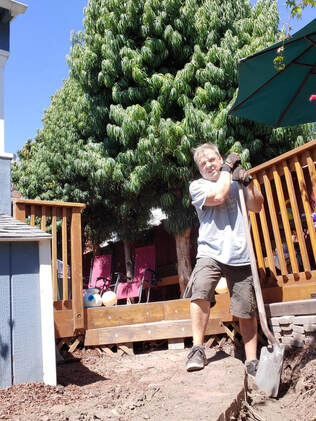
I did a lot of research in order to find out the best way to execute this endeavor and I documented the process that I used, here. My amazing husband started by removing the brick pathway that was there. He excavated to a 6" depth. The finished path would end up being 42" wide by 10' long with a curve as you'll see below.
Once the approximate shape was sorted out, we purchased 1'"x6" bender board to lay it in as our edge support. This required more digging and backfilling in areas where the original path wasn't correct.
NOTE: When leveling, your bender board should be level across as it will serve as your guide in later steps. It should slope away from your house by at least 2% grade which we didn't have to worry about because we were already dealing with a slope.
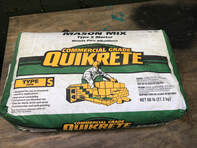
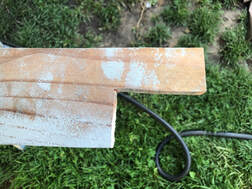
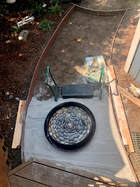
I used forms to help me create somewhat consistent circles. I arranged the pebbles under my fig tree where I could lay out my rocks and wet them to see their vibrant colors. As you can see in the photos below, when the rocks are dry are hard to discern their true beauty. I worked on a small piece of wood barely larger than my form which would allow me to arrange the rocks and then carry the completed concentric circle mandalas over to the path area (which was in full sun!)
WRONG!
Now it's time to clean up! I made one heck of a mess and all this 'stuff' needs to go back into their resting places. Since it was a sunny weekend, I borrowed an E-Z Up from my neighbors so that that I could take breaks and rest in the shade.
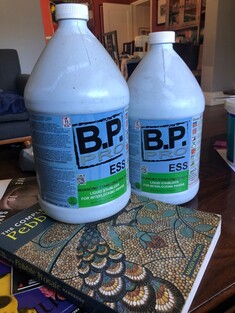
The approximate cost for this project was $300.
Here is a list of the material used in this project:
1"-2" Mexican pebble (8 75# bags)
Mason Mix (60#) - 8 bags
Deck Mud (50#) - 1 bag
1"x6"x20' bender board
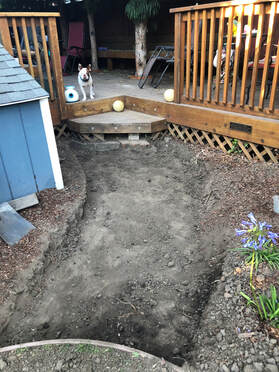
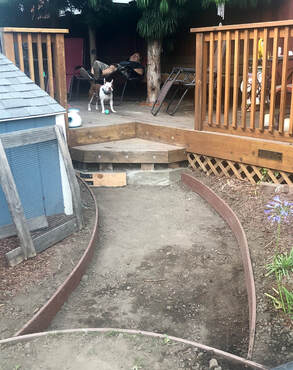
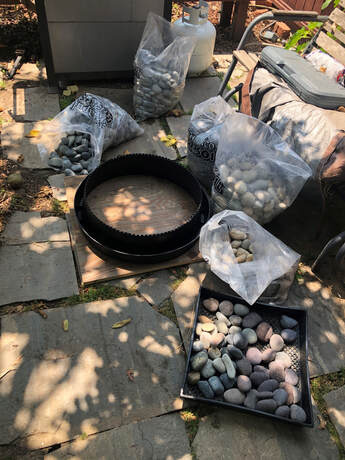
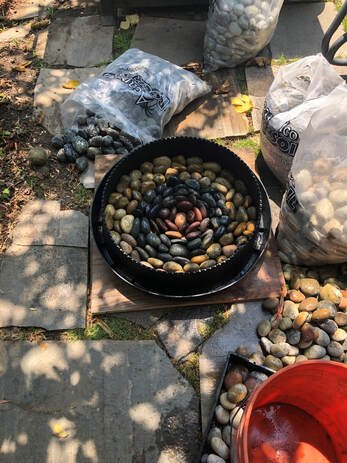




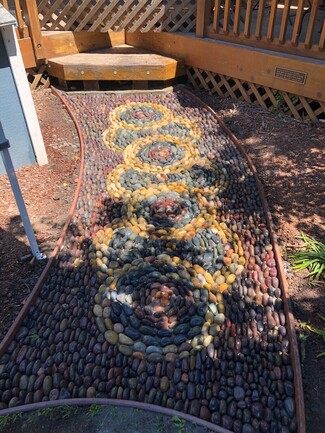
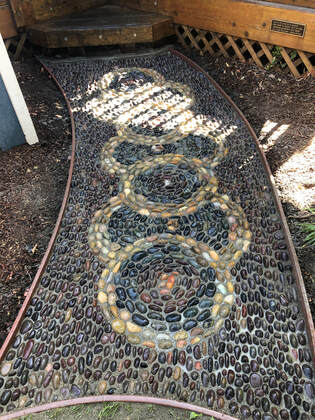
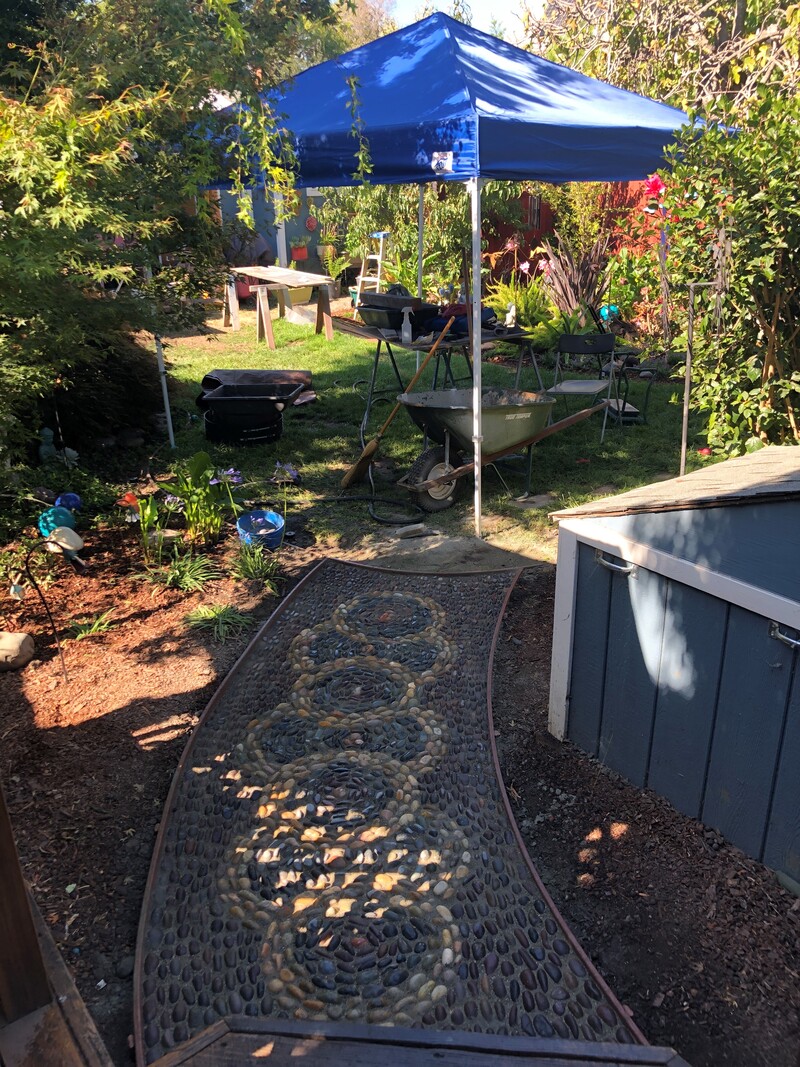



 RSS Feed
RSS Feed